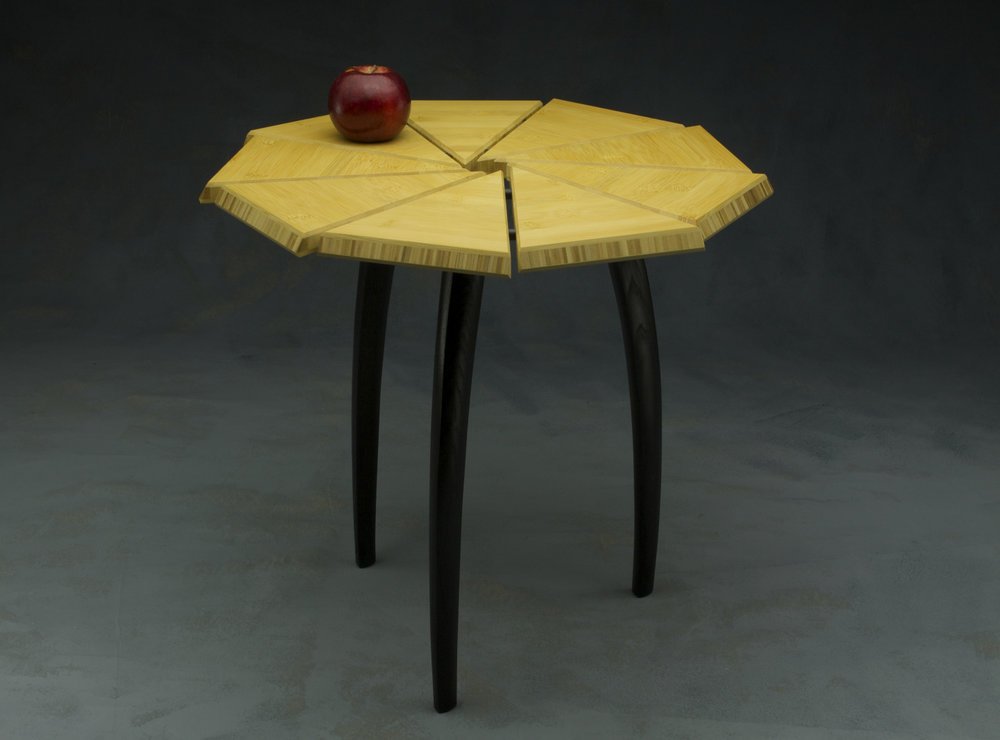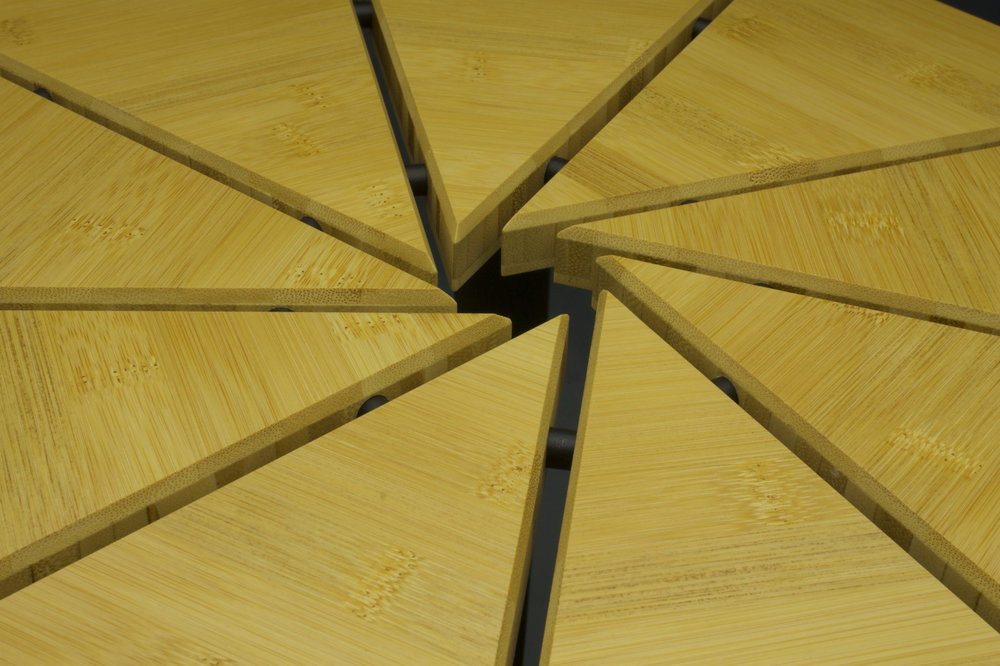This table is one in a series where I am exploring the relationship between repeated strong graphic shapes, negative space and the illusion of pieces hovering away from each other. The top is made from a piece of bamboo countertop material that was headed for the dumpster before I intervened. This bamboo is a ‘plywood’ with a natural flat grain face and vertical core.
Although I wouldn’t typically use a plywood material for building fine furniture, the grain pattern in the plies had a lot of visual interest that could be used quite successfully in the design. The triangle pieces were cut to a precise angle on the table saw. They were then drilled to receive the aluminum dowel which provides the connection points for all of the pieces that make up the table top. The pieces were then profiled and sanded. I love how they hover away from each other making you wonder how the top can hold itself together. And this spacing is what creates a delightful interplay of light and shadow under the table.
The legs are made from ash which has been ebonized. Ebonizing is a process that relies on a chemical process to turn the wood fibers black. Unlike a stain or paint that sits on the surface of the wood, ebonizing is integral to the wood fibers. Ebonizing is achieved by adding tannins to the wood (although many woods have naturally occurring tannins) and then applying an iron oxide solution. The iron oxide reacts with the tannins turning the wood a beautiful, rich black while preserving all of the detail of the grain. The triangle theme of the top is echoed in the legs, which have a rounded triangular cross-section. The legs were cut to rough shape on the bandsaw and tapered. Once this was done, I hand sculpted them into their final shape using a variety of rasps and files. A hardline is sculpted into the leg where each of the sides of the triangle intersect. Final smoothing of the legs was achieved with card scrapers and sandpaper backed with duct tape.
~kelly






